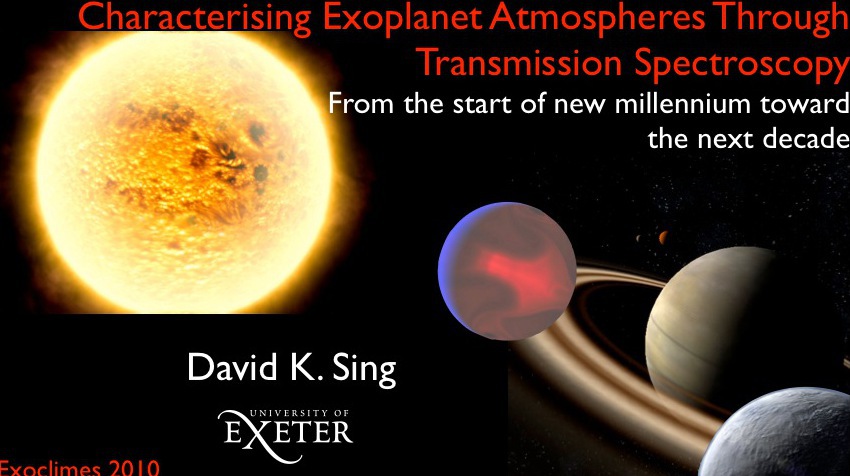Giant exoplanets > David Sing
Exoplanet atmospheres
through transmission spectroscopy
David Sing
University of Exeter, UK
through transmission spectroscopy
David Sing
University of Exeter, UK



Abstract: An ever growing number and diversity of short-period planet atmospheres are now accessible through the transit-radius spectra (transmission spectroscopy). Detections over the last decade have mainly been hot Jupiter gas giant planets, which have provided the first measurements of composition, structure, and dynamics of exoplanet atmospheres. I will discuss the current state of the art for these observations including HST, Spitzer and large ground-based telescopes, review what can be learned from these measurements, and examine what can be realistically achieved in the reasonably near future through this technique.
Additional materials: PDF of slides
ExoClimes 2010, Exeter, Wednesday 8th Sep 2010
Additional materials: PDF of slides
ExoClimes 2010, Exeter, Wednesday 8th Sep 2010
